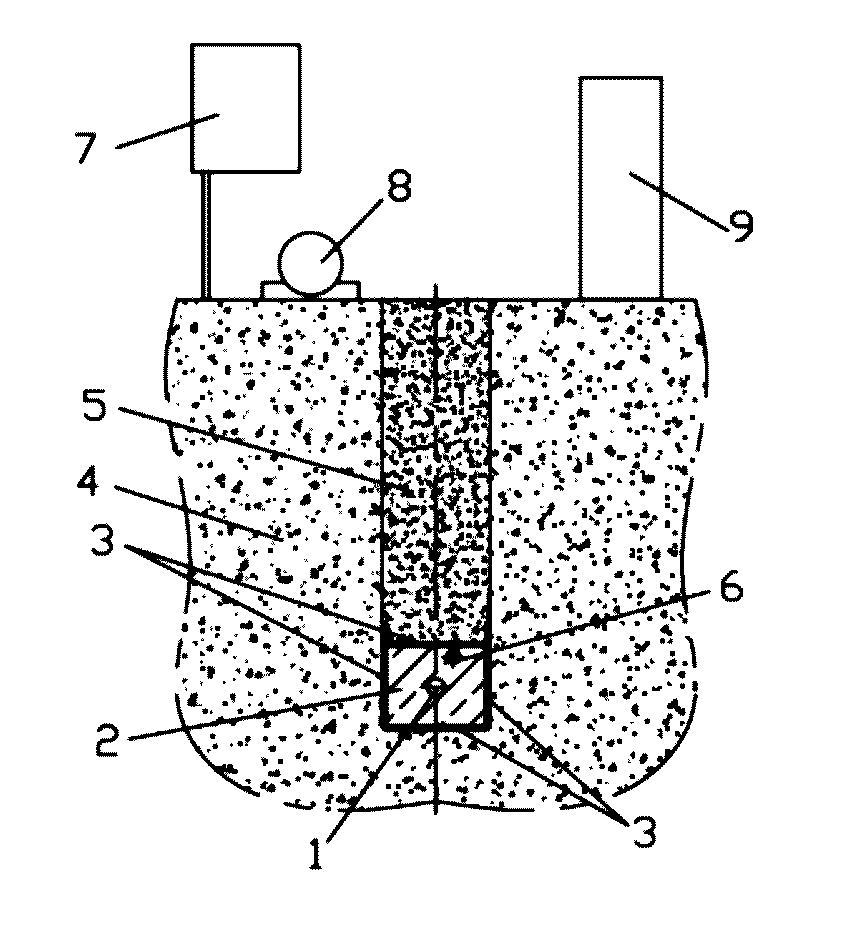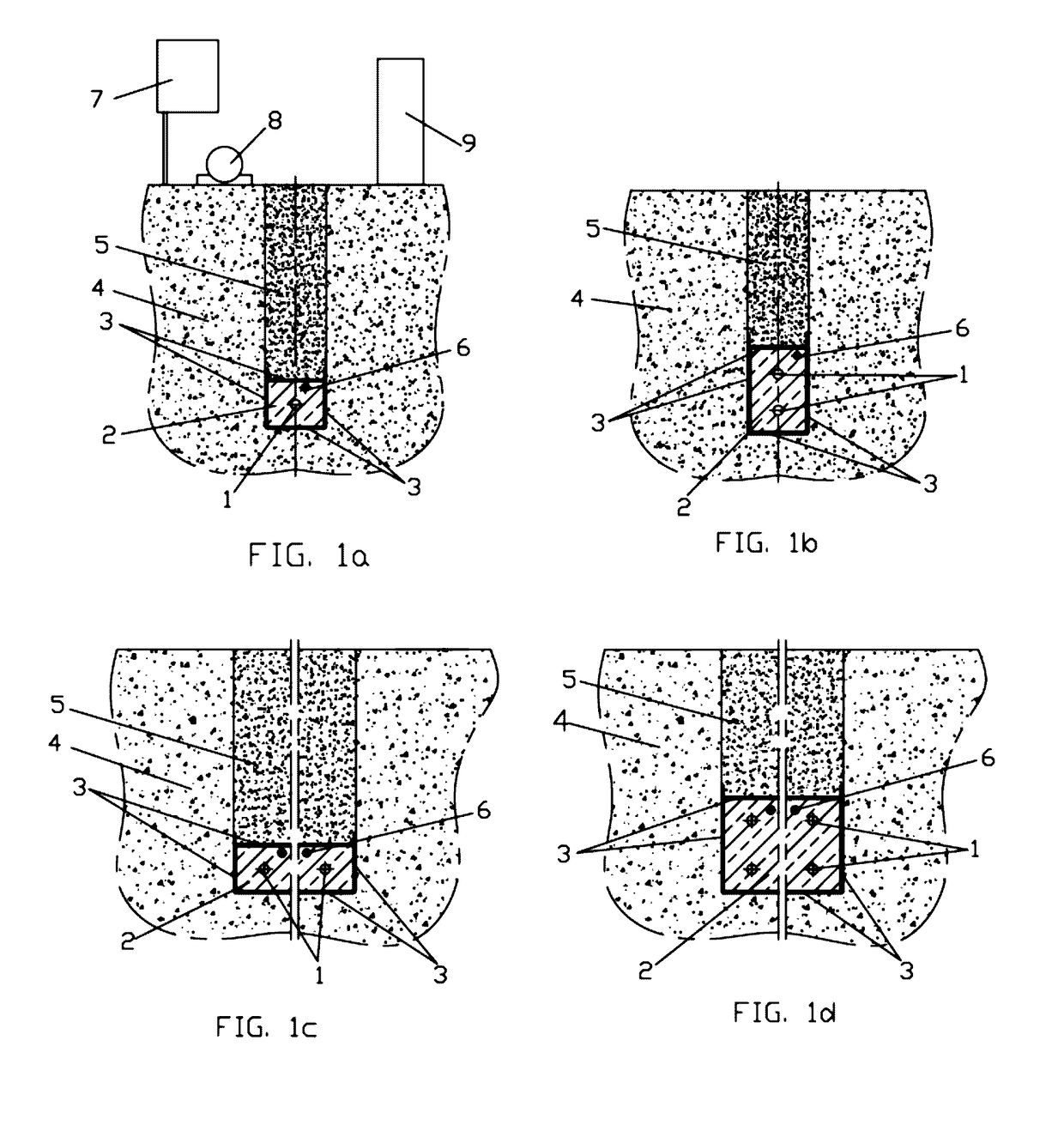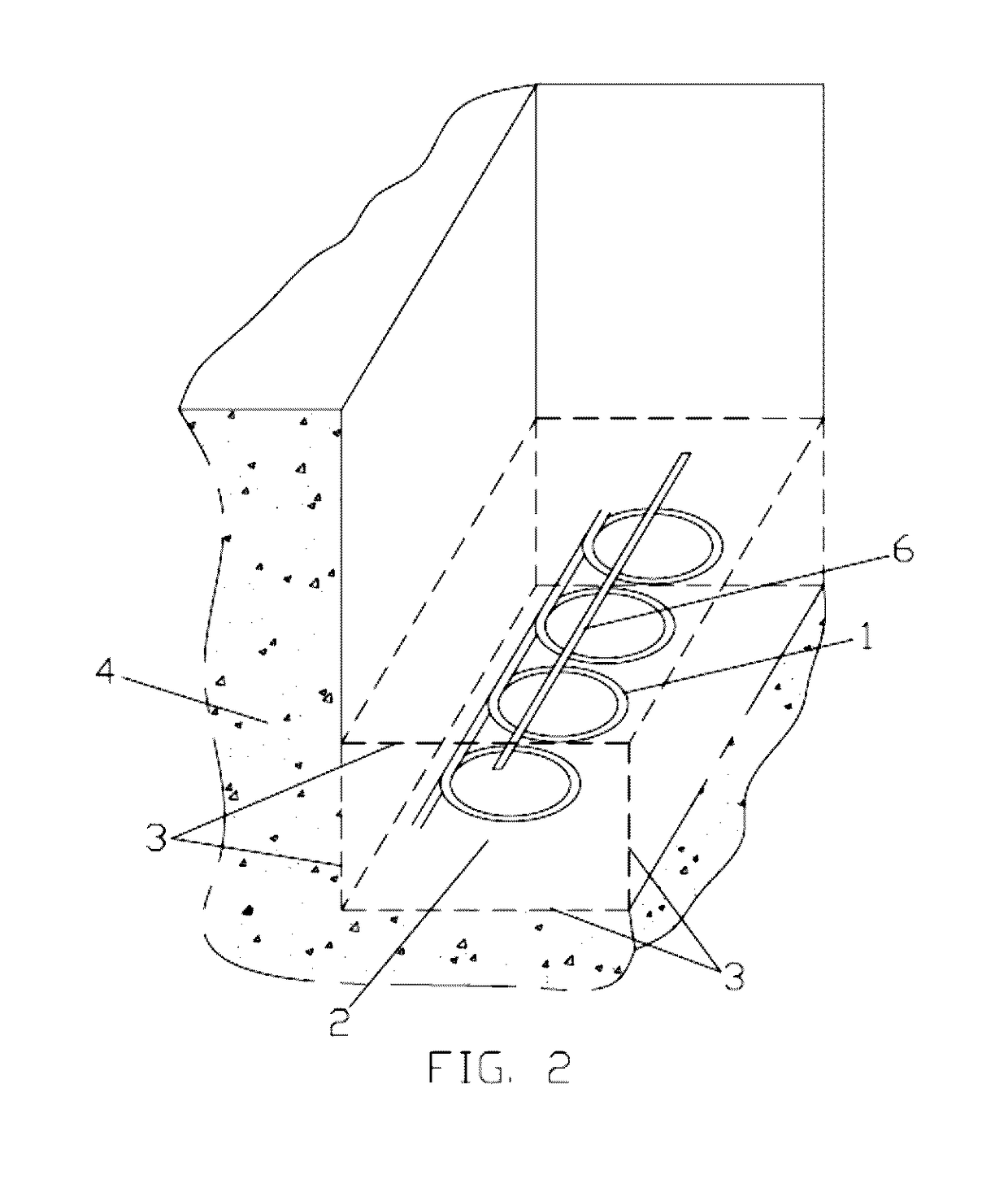Horizontal ground-coupled heat exchanger for geothermal systems
a geothermal system and ground-coupled technology, applied in geothermal prediction/simulation, lighting and heating apparatus, heating types, etc., can solve the problems of reducing system efficiency, reducing efficiency, and reducing the cost of vertical systems, so as to reduce the length of required pipes and land area, reduce the major drawbacks of horizontal systems, and minimize the effect of large capacity
- Summary
- Abstract
- Description
- Claims
- Application Information
AI Technical Summary
Benefits of technology
Problems solved by technology
Method used
Image
Examples
Embodiment Construction
[0072]Some variants of principal schemes of the proposed horizontal closed-loop ground-coupled heat exchangers, containing one or number of pipes, are shown in FIGS. 1a, 1b, 1c, 1d. As a rule, in horizontal ground heat exchangers pipes are laid in trenches, dug in surrounding soil, but other laying also may be performed, that is not critical for the proposed invention. On FIGS. 1a, 1b, 1c, 1d the pipes 1 are laid in the stratum 2 with increased heat conductivity. The stratum is separated from all sides by thin waterproof material 3 from surrounding soil 4 and backfilling soil 5.
[0073]The FIGS. 1a, 1b, 1c, 1d show, as examples, some options for the pipes location: one straight pipe in the stratum (FIG. 1a), two straight pipes in the stratum in two levels (FIG. 1b), some number of pipes in the stratum in one level (FIG. 1c), some number of pipes in the stratum in two levels (FIG. 1d).
[0074]For controlling of water content and compensation for unintended small water leaks, the undergro...
PUM
 Login to View More
Login to View More Abstract
Description
Claims
Application Information
 Login to View More
Login to View More - R&D
- Intellectual Property
- Life Sciences
- Materials
- Tech Scout
- Unparalleled Data Quality
- Higher Quality Content
- 60% Fewer Hallucinations
Browse by: Latest US Patents, China's latest patents, Technical Efficacy Thesaurus, Application Domain, Technology Topic, Popular Technical Reports.
© 2025 PatSnap. All rights reserved.Legal|Privacy policy|Modern Slavery Act Transparency Statement|Sitemap|About US| Contact US: help@patsnap.com



